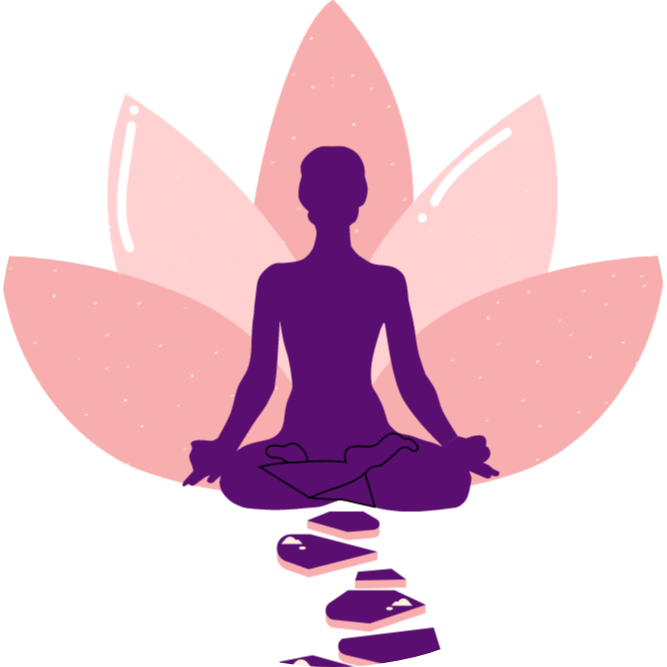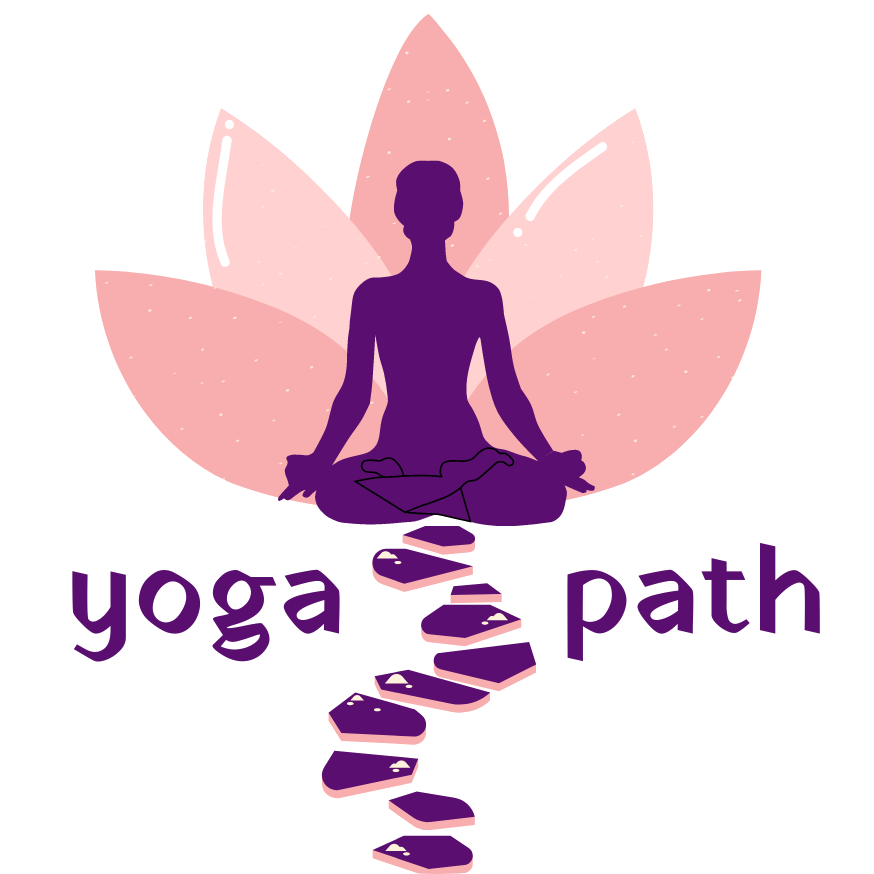Relief from Knee Pain
ASANAS FOR KNEE PAIN
Find relief from Knee Pain
We know what that nagging knee pain feels like! This could be due to arthritis, osteoarthritis, or simply an overworked knee. Yoga helps heal and strengthen the knees.
When back muscles, glutes, hips and thighs are weak or if there is an imbalance in the muscles, it directly affects the knees. Yoga helps address this. We work to strengthen all the muscles around the knee joint and those that could put a strain on it.
Here are 10 yoga poses that can strengthen your knees and help keep knee pain at bay. Remember to do these poses right and patiently with consistency to give you long lasting results.
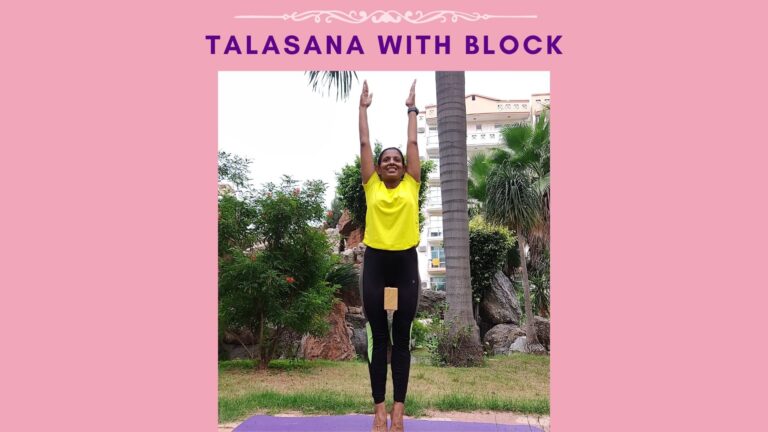
Standing Position – Upwards Stretch
Talasana or Palm Tree Pose – variation with a block.
In this pose, stand erect with hands at their respective sides. Keep the feet parallel to each other and maintain a one-foot distance between them. Place a block between your thighs.
Inhaling, raise both arms up above the head. Keep the arms close to the ears.
Simultaneously, raise both the heels, to achieve a maximum stretch of the body. Synchronise the first two steps, while inhaling, in 3 seconds.
Now, balancing on the balls of the feet, with the completed upward stretch of the arm and the body, keep the gaze straight ahead. You can increase the pressure on the block to get more engagement of the adductor muscles in the legs, and maintain the pose for 6 seconds, retaining the breath (final position).
To return to starting position: Turn the palm to face outward and then exhaling, bring the arms down keeping them straight, through a backward and downward circuit. Simultaneously, lower the heels to assume the starting position.
Contraindications:
Frozen shoulder, Arthritis, Hypertension and serious cardiac complaints.
Benefits:
Maximum stretching of the body helps in increasing height
Co-ordination of muscular activity
Helps increase the girth and contour of the chest
Develops the respiratory muscles and the vital index
Improves elasticity, capacity and circulation of the lungs
Improves the venous flow and equalises blood circulation
Improves flexibility of the spinal column
Tenses/tones the usually relaxed muscles of the abdomen
Muscles of the leg are toned and improvement in the functioning of the veins
Due to the stretch of the vertebral column, undue pressure on the vertebrae is relieved.
Pressing of the block:
– Strengthens the adductors and abductor muscles (inner thigh and outer thigh muscles), which in turn strengthens the knees.
– Helps engage the pelvic floor.
– Strengthens the core muscles.
Uthkatanasana – Standing Asana
Uth – means raise, kat means waist. This pose is also known as the Chair Pose.
Stand with your feet slightly apart. Stretch your hands to the front with palms facing downwards, with elbows straight.
Bend the knees and gently push your pelvis down and backwards as you exhale in 3 seconds as if you are sitting on an imaginary chair.
With awareness, sit straight and lengthen your spine.
Relax. Sink deeper into the chair.
Hold for 6 seconds – gradually increase to 1 minute.
Ensure that your knees don’t bend and cross ahead of your toes.
Inhale straighten up and lower arms to your side. Breathe and smile when holding this pose.
Contraindications:
Chronic knee pain, Arthritis, Ankle injury, any Knee problem or damaged ligaments and pain in the lower back. Headache or Insomnia (sleeplessness).
Benefits:
Exercises the spine, hips, shoulders and chest muscles.
Helps strengthen the lower back and torso.
Tones the thigh and strengthens them as well as ankle, leg and knee muscles.
Stretches Achilles tendon and shins while healing flat feet.
Strengthens the muscles that support the knee.
Tones digestive organs and opens heart.
Balances the body and brings determination in the mind.
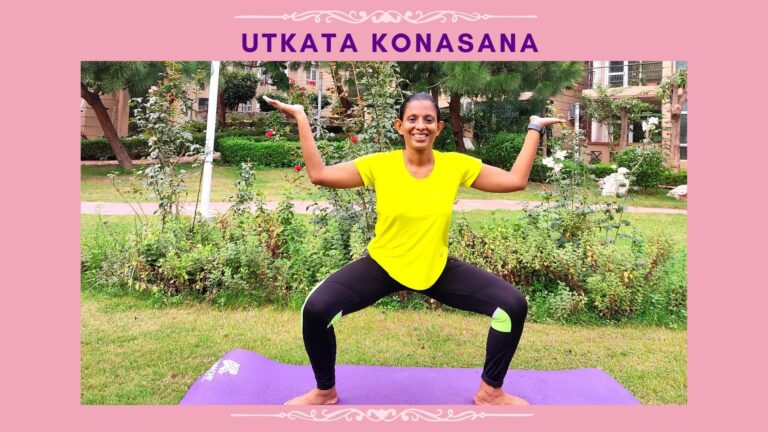
Standing Pose
Utkata Konasana is also known as Goddess Pose.
Stand erect with the hands freely by the sides.
Take the feet about 3 feet apart. Turn your feet outwards with the toes pointing away from the body and the heels pointing towards the body.
Now bend your knees till the thighs become parallel to the ground like a wide squat.
Bring both your palms together in the Namaskar mudra and place it in front of the chest. (Other variations include placing the hands parallel to the ground with the palms facing upwards.
Roll your shoulder out and backwards, expand the chest forward and gaze forward.
Breathe normally and deeply in this position. During exhalation, contract the abdomen and press the lower back down and feel the pressure on the thighs. Maintain this position for as long as you are comfortable.
To release the pose, straighten the knees and raise yourself up and bring the feet closer. Then lower your hands down.
Contraindications:
Utkata Konasana should be avoided by those suffering from hip, ankle and severe knee injuries. shoulder injuries.
Benefits:
Strengthens the hips, the lower back and the thigh muscles. This in turn strengthens the knees.
Expands the uterus before pregnancy and helps during pregnancy.
Helps to expand the chest and improves posture
Massages the organs in the abdomen, particularly the kidneys, the ovaries, urinary system and the prostate gland
Relieves menstrual pain and cramps
Expands the lungs and improves respiration
Energizes the body, relieves stress and gives a general sense of well-being
Trikonasana – Standing Position – Sideward Bend
Trikona meaning Triangle. Trikonasana is Extended Triangle Pose
In this pose, begin with both feet 3 feet apart. Turn the right foot out pointing to the right at a right right angle to the left foot.
Inhaling in 3 seconds, raise both arms out at shoulder level with palms facing downward.
Exhaling in 3 seconds and gazing at the right palm we extend and lower the right palm to the right foot at the same time raising the left arm straight above. Then turn the gaze to the left thumb of the arm above. The legs and hands are straight. The upper left hand and lower right hand are aligned in one straight line lift the left shoulder up so that the shoulder is also in one line aligned with the arms. Hold this pose for 6 seconds.
As you exhale in 3 seconds, turn your gaze to the lower arm, raise both arms to shoulder level and lower them down by your sides. Repeat the same on the left side.
This is one round. Practise 3 rounds.
Contraindications:
Spinal injury, Back injury or Shoulder injury, Frozen shoulder and severe arthritis, Hypertension and serious cardiac complaints.
Benefits:
Stretches, develops and tones the muscles of the sides and the obliques
Strengthens the back and improves posture
A very good compression and twist to the abdomen and the organs therein
Improves digestion
Stimulates the nervous system
Relieves symptoms of menopause
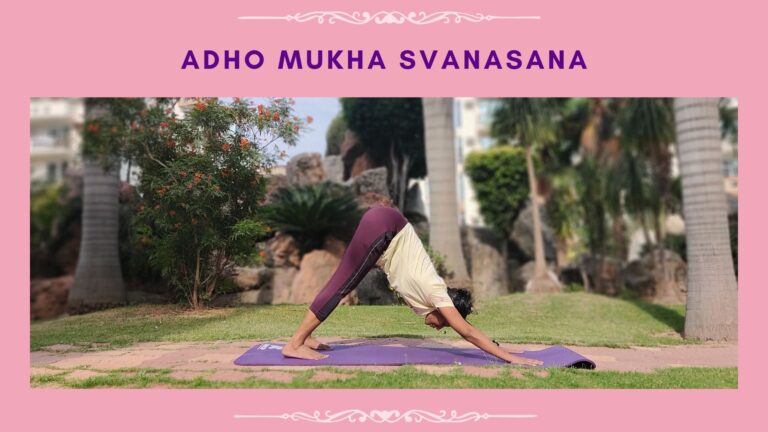
Inversion Asana
Adho meaning down, mukho meaning Face, svana meaning Dog. This asana too is part of the flow of surya namasakar (salute to the sun).
The name is derived from the way the dog stretches his front limbs when getting up.
In this pose, we can start by sitting on all fours in a table top position with knees and palms on the floor. The palms are at shoulder distance on the floor also the knees and feet are at hip distance apart. Lift the knees up to raise the hips up as you inhale. The weight of the body is on both palms and feet. With both arms straight at the elbows and the legs being straight at the knees the hips are raised up the head is down with arms close to the ears. We try to press the chest into the thighs just as we try to close a book to make a V shape. As you exhale, lower down the knees, hips and back into table top.
Contraindications:
Pregnant women, high blood pressure, Weak eye capillaries,
detached retina, or any other infection or inflammation of the eyes and ears and shoulder or back injury
Benefits:
Stretches the hamstring and calf muscles
Strengthens arms and shoulders, legs and ankles
Relaxes and strengthens back muscle
Strengthens abdominal muscles and core
Improves posture
And calms the heart
Virabhadrasana – Standing Asana
Virabhadrasanas is also known as the Warrior Pose.This pose is named after Veerabhadra, a fierce warrior and an incarnation of Lord Shiva. It refers to the “spiritual warrior”, who bravely does battle with the universal enemy – self-ignorance (avidya) – the ultimate source of all our suffering.
Stand straight with your legs wide apart by a distance of at least 3-4 feet.
Turn your right foot out by 90 degrees and left foot in by about 15 degrees. The heel of the right foot must be aligned to the centre of the left foot. Face the right side. Lift both arms and join your palms above your head. Make a salutation pose or Namaskar pose with your palms above the head.
Breathing out, bend your right knee. Ensure your right knee is in a straight line with right ankle and the knee does not overshoot the ankle. Gaze ahead.
Make a gentle effort to push your pelvis down.so that the right thigh is parallel to the floor and the left leg is straight at the knee and pushing into the outer part of the left foot. Hold the yoga posture with the determination of a warrior. Smile like a happy smiling warrior. Keep breathing .
Breathing in, raise up straightening the knee Breathing out, bring your hands down from the sides.
Repeat the yoga posture for the left side (turn your left foot out by 90 degrees and turn the right foot in by about 15 degrees).
Contraindications:
Vertigo – if you are suffering from vertigo, place your feet wide enough to get a good balance.
High blood pressure, heart problems – don’t stretch arms over the head.
Hip injury or if you recently had hip replacement surgery, you must refrain from practicing this asana.
Benefits:
Strengthens and tones the arms, legs and lower back.
Strengthens and tones hips, thighs, ankles, calves, abdomen, shoulders, arms and back.
This asana strengthens shoulders and relaxes them.
Strengthens the quadriceps, gluteus maximus, calf muscles, and hamstrings.
Strengthens knees.
It increases the stamina of the body.
It is likewise an effective asana for those who are in sedentary jobs.
Strengthens core and shoulders.
Engages the deep core muscles, which helps create stability and improve balance.
Can help alleviate pain cause by sciatica.
Helps improve circulation in abdomen and is useful for the digestive system.
Relaxes the mind and the body.
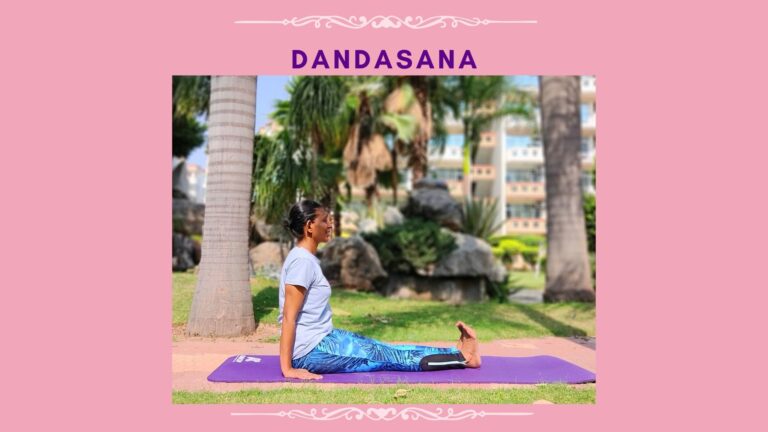
Seated Pose
Danda Asana means stick / staff pose.
In this asana, you have to keep your feet and back straight at a right angle to each other in a sitting position. This is the simplest Asana to do for all age groups.
Sit on the ground with your back straight and legs extended out in front of you. Sit on the mat and lengthen and straighten the spine. Flex your feet, press out the heels and point the toes towards you.
Place your palms on the ground next to your hips, square out your shoulders yet let them be relaxed and not hunched, and expand the chest out. Press the palms firmly into the ground this will raise the hips slightly but the spine is straight, the legs are straight, thighs engaged and knees are pressed into the ground.
Hold this pose for six seconds and increase to thirty seconds.
Contraindications:
Injury to wrist or back.
Benefits:
Increase the flexibility of the hips and pelvis
Strengthens back muscles
Lengthens and stretches the spine
Improves the posture
Helps blood circulation to reproductive organs
Stretches shoulders and chest
Nourishes your body’s resistance to back and hip injuries
Helps to calm brain
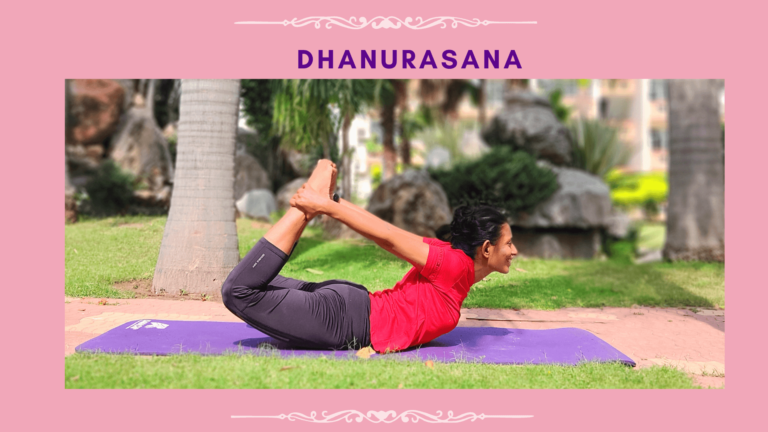
Prone Position / Lying Down Asana
The Asana resembles a bow or dhanusha, hence the name.
Lie on the stomach (prone position), on a mat, legs stretched out straight and feet together with toes pointing outwards.
Slowly, raise the head and the neck and simultaneously bend the legs at the knees. Grasp the ankles of the legs with the respective hands.
Inhaling, in 3 seconds, raise the head upwards, Simultaneously, pull the legs also upwards to give the body a bow shape.
Hold this pose for 6 seconds.
Exhaling, in 3 seconds, bring the head down and simultaneously, release the ankles and unfold the legs.
Remember to raise and lower each vertebrae slowly relieving the spinal pressure by stages. Practice 3 rounds. Hold the final position for 30 seconds and slowly till 2 minutes (start with 30 seconds) – breathing should be normal, slow and rhythmic.
Contraindications:
Hernia, hyper tension, heart ailments, pregnancy, peptic ulcers, serious spinal aliments and osteo-arthritis. People with a protruding belly will have difficulty in assuming a prone position.
Benefits:
Abdominal area gets a very good massage.
The internal abdominal organs and reproductive organs also get a good circulation.
Regulates menstrual cycle.
Stretches to abdominal and pelvic muscles.
Strengthens muscles of thighs and legs.
Stretches the intercostal muscles and improves respiration.
Prevents diseases by aiding elimination through intra- abdominal pressure.
Provides relief from flatulence and indigestion.
Relieves back pain.
Helps in resolving slipped disc.
Helps relieve Ankylosing Spondylitis.
Alleviates constipation and helps in menstrual disorders.
Strengthens the will power by increasing determination and alertness towards precision in functioning.
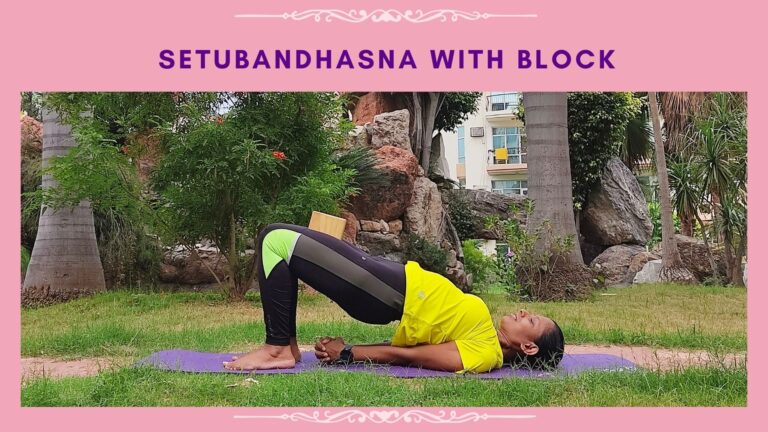
Supine Position
Setu meaning Bridge; Bandha meaning Bind, Lock. This is a variation using a block.
To begin, lie on your back. Fold your knees and keep your feet hip-distance apart on the floor, close to your pelvis, with knees and ankles in a straight line.
Place your palms on your ankles.
Hug a block between your inner thighs. Keeping your feet parallel and hip-distance apart, place a block at its most narrow width between your inner thighs.
Inhaling, gently roll the shoulders inwards; raise the chest to the chin supporting your weight with your shoulders, arms and feet Now, slowly lift your lower back, middle back and upper back off the floor. Lightly squeeze the block as you lift into Bridge Pose.
This keeps your knees in line and buttocks softer; you might notice it feels better in your lower back too.
Hold this pose for a few breaths. exhale as you gently release the pose.
Contraindications:
Neck injuries, Shoulder or Back injuries or surgery, Hypertension, Heart ailment, Myopia and glaucoma or retinal detachment.
Benefits:
Strengthens the back muscles.
Relaxes the back instantaneously.
Gives a good stretch to the chest, neck and spine.
Opens up the lungs and reduces thyroid problems.
Strengthens glutes, quadriceps and calves.
It cures leg fatigue and prevents varicose veins.
Calms the brain, reducing anxiety, stress and depression.
Helps improve digestion.
Helps relieve the symptoms of menopause and menstrual pain.
Helpful in asthma, high blood pressure, osteoporosis, and sinusitis
Gives relief from migraines headaches insomnia and exhaustion.
Pressing the block benefits:
– Strengthens adductors and abductors (inner and outer thigh muscles). In turn, this strengthens the knees.
– Strengthens deep lower belly transverse abdominus muscles.
– Also strengthens the glutes and the pelvic muscles.
Ardha Halasana – Supine Pose
Ardha means half, Hala means plough; so this is the Half Plough Pose
Lie down on the mat on your back (supine position).
Join both the legs and keep arms by your side. Slowly breathe in and raise the leg perpendicular to the ground keeping the knee straight and the feet flexed with toes pointing towards the face and heel pointing backwards.
Breathe in and out and stay in this position as long as possible.
Breathe out and lower your legs. relax for a while.
Repeat the same for 3 to 5 times.
The above mentioned technique can also be performed only with a single leg one after the other.
Contraindications:
People suffering from any Cardiac problem, Back pain, High blood pressure should avoid this practice.
Benefits:
Improves digestion and appetite.
Improve blood circulation.
Strengthens the hip, thigh muscles and calf muscles, which in turn strengthens the knee and improves joint mobility.
Helpful to reduce abdomen fat and lose weight.
Very good massage and circulation to the pelvic region.
Strengthens the pelvic floor muscles and supports the uterus.
Stimulates the abdominal organs and strengthens the core muscles
Helps relax and massage the lower back
Helps relieve the swelling and improves varicose veins
Expels gas, improves kidney and liver function and promotes production of digestive enzymes.
Therapeutic application of Ardha Halasana:
Indigestion, Constipation, Obesity, Urinary disorders
